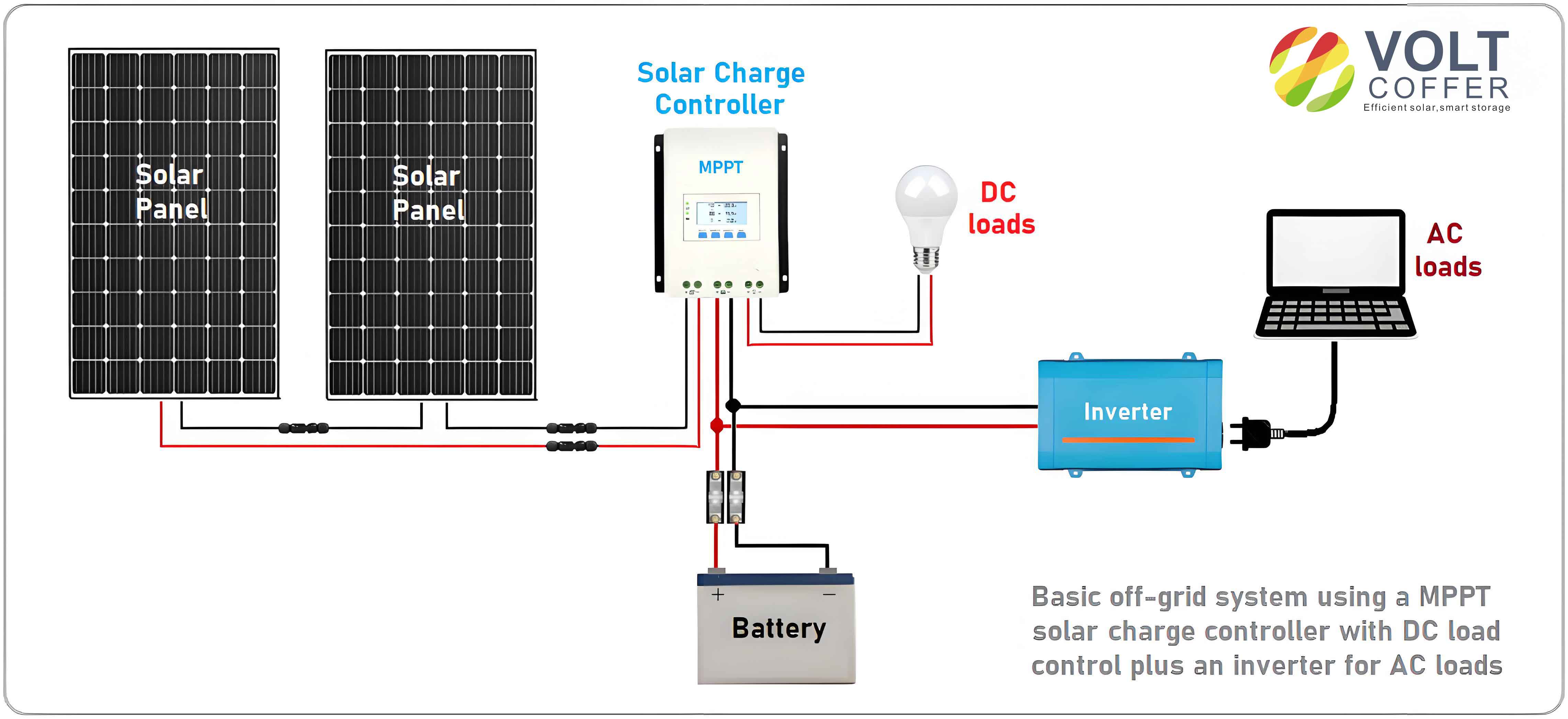1. Introduction
Maximum Power Point Tracking (MPPT) is critical for optimizing the efficiency of photovoltaic (PV) systems. Under uniform solar irradiation, PV arrays exhibit a single-peak power-voltage (P-V) curve, enabling conventional MPPT methods like Perturb and Observe (P&O) or Incremental Conductance (INC) to locate the global maximum power point (GMPP) effectively. However, in partial shading conditions (PSC), the P-V curve becomes multi-peaked, causing traditional MPPT techniques to stagnate at local maxima and incur significant power losses. To address this, bio-inspired optimization algorithms—such as Particle Swarm Optimization (PSO), Grey Wolf Optimization (GWO), and their hybrids—have gained prominence for their ability to navigate complex search spaces.

This study proposes a novel hybrid algorithm, PSO-LGWO, which integrates an improved PSO with a Levy Flight-enhanced GWO (LGWO). The algorithm aims to balance global exploration and local exploitation while accelerating convergence under dynamic environmental conditions.
2. Challenges in Conventional MPPT Methods
Traditional MPPT strategies face two key limitations:
- Local Entrapment: In PSC, multiple peaks arise due to mismatched currents across shaded PV modules. P&O and INC often fail to distinguish between local and global maxima.
- Slow Response: Rapid changes in irradiance (e.g., moving clouds) demand faster tracking speeds, which gradient-based methods struggle to achieve.
3. Algorithm Design
3.1 Foundation: PSO and GWO
- PSO: Each particle updates its velocity (vivi) and position (xixi) using:vik+1=w⋅vik+c1r1(Pbest,i−xik)+c2r2(Gbest−xik)vik+1=w⋅vik+c1r1(Pbest,i−xik)+c2r2(Gbest−xik)xik+1=xik+vik+1xik+1=xik+vik+1where ww is inertia weight, c1,c2c1,c2 are learning factors, and r1,r2∈[0,1]r1,r2∈[0,1].
- GWO: Mimics the social hierarchy of grey wolves (α, β, δ leaders). Positions are updated via:X(t+1)=X1+X2+X33X(t+1)=3X1+X2+X3where X1,X2,X3X1,X2,X3 represent movements guided by α, β, and δ wolves.
3.2 Proposed PSO-LGWO Algorithm
Key enhancements include:
- Dynamic Inertia Weight (wiwi):wi=0.3×(2−tTmax)wi=0.3×(2−Tmaxt)Ensures rapid global exploration initially and precise local exploitation later.
- Levy Flight Integration: Enhances GWO’s search diversity using Levy-distributed step sizes:L(s)∼∣s∣−1−β,0<β≤2L(s)∼∣s∣−1−β,0<β≤2This prevents premature convergence by enabling long jumps in the search space.
- Dual Convergence Factors (a1,a2a1,a2):a1=2cos(0.5π×tTmax)a1=2cos(0.5π×Tmaxt)a2=2sin(0.5π+(tTmax)1.5)−1a2=2sin(0.5π+(Tmaxt)1.5)−1These factors decouple global and local search phases for α and β wolves, respectively.
- Hybrid Position Update: Combines PSO’s velocity correction with LGWO’s leadership hierarchy:Vi=wi⋅[Vi+c1r1(Xα−Xi)+c2r2(Xβ−Xi)]Vi=wi⋅[Vi+c1r1(Xα−Xi)+c2r2(Xβ−Xi)]Xi+1=Xi+ViXi+1=Xi+Vi
4. Simulation and Results
4.1 Benchmark Function Testing
The algorithm was tested on CEC2005 functions (Table 1). PSO-LGWO outperformed GWO, GWO-PSO, and MGWO in convergence speed and accuracy.
| Function | Dimension | PSO-LGWO Iterations | GWO Iterations | MGWO Iterations |
|---|---|---|---|---|
| F18 | 30 | 9 | 13 | 15 |
| F13 | 30 | 12 | 18 | 20 |
4.2 Static Shading Tests
Three irradiance profiles were simulated (Table 2). PSO-LGWO achieved higher tracking accuracy (98.9–99.5%) with faster convergence (<0.103 s).
| Condition | Algorithm | Tracking Accuracy (%) | Convergence Time (s) |
|---|---|---|---|
| Uniform | PSO-LGWO | 98.9 | 0.101 |
| GWO-PSO | 97.9 | 0.131 | |
| Partial 1 | PSO-LGWO | 99.4 | 0.099 |
| MGWO | 88.8 | 0.151 | |
| Partial 2 | PSO-LGWO | 99.5 | 0.103 |
| GWO | 95.6 | 0.179 |
4.3 Dynamic Shading Tests
Under rapidly changing irradiance (Table 3), PSO-LGWO outperformed P&O and INC by escaping local optima and achieving >96.5% accuracy in 0.13 s.
| Time Interval (s) | Max Power (W) | PSO-LGWO Time (s) | INC Time (s) |
|---|---|---|---|
| [0, 0.5] | 6234 | 0.13 | 0.42 |
| [0.5, 1] | 5121 | 0.13 | 0.38 |
| [1, 1.5] | 6784 | 0.13 | 0.45 |
5. Conclusion
The proposed PSO-LGWO algorithm addresses the limitations of conventional MPPT methods by combining the global search capabilities of PSO with the structured hierarchy of GWO, further enhanced by Levy Flight. Key achievements include:
- Superior Convergence: 30–40% faster than GWO variants in static shading.
- Robustness: Escapes local maxima in dynamic conditions with <0.13 s response time.
- High Accuracy: Maintains >96.5% tracking accuracy across all test scenarios.
Future work will focus on real-time hardware implementation and scalability for large PV farms.
